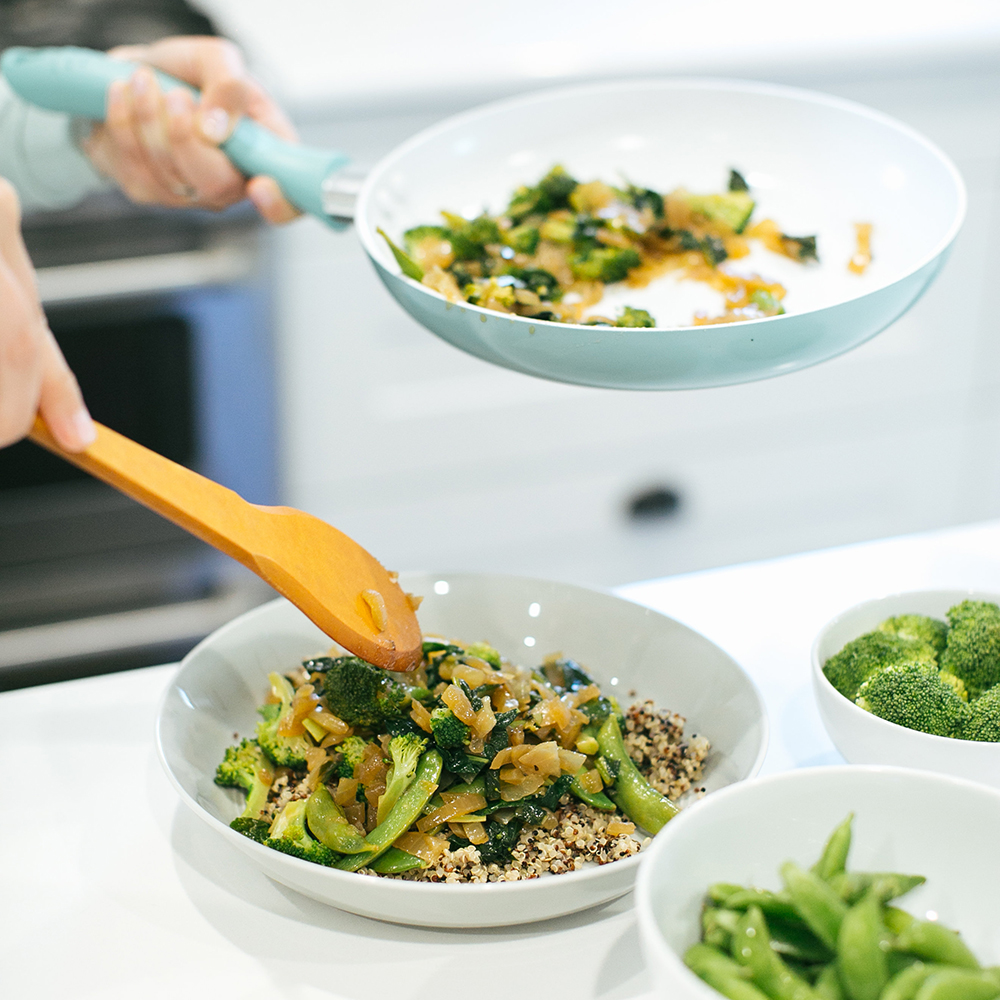Iron deficiency in female athletes is both common and a nutrient of concern, even for women who do not have low iron levels. Iron is an essential mineral for the body, especially for athletes who have higher iron requirements due to increased energy expenditure and muscle mass development. It is absolutely a mineral we need to pay attention to, but I’d also like to challenge how we look at iron needs in the body.
Why do Female Athletes Struggle with Iron Deficiency?
As an endurance dietitian and functional nutrition practitioner, I’ve seen time and time again that women struggling with chronically low iron levels are also suffering from mineral imbalances, and underlying inflammation that need to be addressed before just deciding to take an iron supplement. We need to understand how the body makes and uses iron and what nutritional cofactors are needed for this process. Because otherwise all taking an iron supplement is going to do is create more oxidative stress in the body, furthering the inflammatory response and increasing nutrient needs even more.
Our bodies need 25 mg of iron each day to make red blood cells. And the super cool thing about our bodies is that we make 24 grams of iron already every day thanks to the reticuloendothelial system (or more easily, the Iron Recycling System). This means we need to eat just 1 mg of iron per day to make up the difference. With the amount of fortification in foods these days, we are getting more than enough from food. Which makes us wonder, why are so many active women suffering from iron deficiency? This is where mineral imbalances and inflammation play a role.
So how can we address these mineral imbalances and nutrient needs to support iron production and recycling? We look to food! While we need foods rich in iron (animal proteins contain heme iron, which is more easily absorbable and plants contain non-heme iron, which is less absorbable by the body), we also need foods rich in supporting minerals, including copper, vitamin A, vitamin C, and magnesium.
It is a common assumption that we need to get iron in the diet from animal sources, and while heme iron in animals is more easily absorbed, it is possible to maintain optimal serum iron levels on a plant-based diet. Whether a vegetarian or not, here are some of my favorite ways to increase iron intake from food.
Vegetarian Sources of Iron
Vegetarian athletes, including females, can obtain sufficient iron and iron-supporting nutrients from various plant-based sources. Here are some vegetarian sources of iron that can help combat iron deficiency in female athletes:
1.Legumes: Legumes such as lentils, chickpeas, black beans, and kidney beans are excellent sources of iron. They are also rich in fiber and protein, making them a nutritious choice for athletes.
2. Spinach and Kale: Dark leafy greens like spinach and kale are packed with iron. They can be included in salads, smoothies, or cooked dishes to boost iron intake. Pairing them with vitamin C-rich foods like citrus fruits or bell peppers enhances iron absorption.
3. Quinoa: Quinoa is a versatile grain that contains a good amount of iron along with other nutrients like protein, fiber, and magnesium. It can be used as a base for salads, added to soups, or enjoyed as a side dish.
4. Tofu and Tempeh: These soy-based products are excellent vegetarian sources of iron. They are also high in protein, making them beneficial for muscle recovery and growth.
5. Nuts and Seeds: Many nuts and seeds, including pumpkin seeds, sesame seeds, hemp seeds, almonds, and cashews, contain iron. They make for convenient and nutritious snacks or can be added to meals and baked goods.
6. Whole Grains: Whole grains like quinoa, oats, brown rice, and amaranth contain iron and other essential nutrients. They provide sustained energy and can be incorporated into meals or consumed as side dishes.
7. Molasses: Blackstrap molasses is a concentrated sweetener that contains iron and other minerals. It can be used as a natural sweetener in baking or added to dishes like oatmeal or smoothies.
Optimizing Iron Absorption
Remember that the absorption of iron from plant-based sources can be enhanced by consuming vitamin C-rich foods alongside iron-rich foods. On the other hand, certain substances like tannins (found in tea), calcium (found in dairy products), and phytates (found in some grains and legumes) can inhibit iron absorption. It is advisable to space out their consumption from iron-rich meals and include a variety of iron sources in your diet. Especially since plant sources of iron are less absorbable by the body, it is beneficial to eat enough to allow for sufficient absorption and utilization.
Other Strategies for Combating Iron Deficiency
While we do need to monitor serum iron levels and ensure adequate dietary intake of iron rich foods, we also need to look at supporting minerals and vitamins necessary to ensuring the reticuloendothelial system is able to properly function to produce, recycle, and mobilize iron throughout the body.
These nutrients include copper, vitamin A, magnesium, vitamin C, vitamin D, and zinc. Many of these nutrients are naturally available in the same foods that are high in iron, listed above. Ensuring a well balanced diet rich in proteins, healthy fats, and fiber will go a long way in supporting nutrient levels, preventing deficiencies, and meeting iron needs.
If you are concerned about your iron levels, and nothing you’ve tried so far has worked, it may be time for a different approach! My favorite way to look at increasing iron levels is by looking at the mineral status in the cells alongside traditional blood labs to see what supporting nutrients may be needed and develop a personalized plan of action based on your unique needs.


